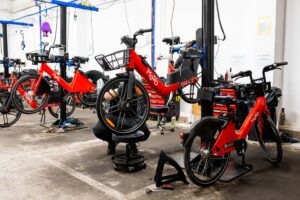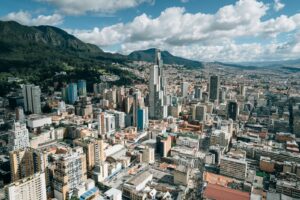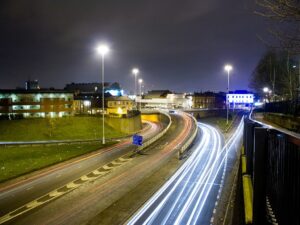Oxford city council and Oxfordshire county council have announced plans to introduce what has been described as the world’s first “Zero Emission Zone” in Oxford city centre.
The proposal would see diesel and petrol vehicles banned from Oxford city centre in phases, starting with some vehicle types and a small number of streets in 2020, potentially moving to all vehicle types across the whole city centre in 2035.
Petrol and diesel cars will be banned in parts of Oxford city centre as part of the proposalsThe Zero Emission Zone proposals would cut the nitrogen dioxide level in Oxford city centre’s most polluted street, George Street, by 74% by 2035, bringing it well below the legal limit, the authorities claim.
According to the city council, latest monitoring data has found that air pollution appears to have plateaued above the legal limits in some parts of the city. Between 2011 and 2013, average NO2Â levels across the city centre fell by 18.9%; but between 2014 and 2016 they fell by just 3.9%.
On Monday (16 October), the city and county councils will launch a six-week public consultation on the proposals — seeking views on the speed of the implementation, and the vehicle types and roads affected.
Step change
Councillor John Tanner, Oxford city council executive board member for a clean and green Oxford, said: “Toxic and illegal air pollution in the city centre is damaging the health of Oxford’s residents. A step change is urgently needed; the Zero Emission Zone is that step change.
“All of us who drive or use petrol or diesel vehicles through Oxford are contributing to the city’s toxic air. Everyone needs to do their bit — from national Government and local authorities, to businesses and residents — to end this public health emergency.
“The county and city together are proposing a staged Zero Emission Zone from 2020 in the city centre, with additional measures to bring down chronic pollution in St Clement’s Street, High Street and St Aldate’s. Everyone who uses Oxford centre has the right to breathe clean air.
“I would urge everyone who uses Oxford city centre to take part in the consultation. We need to know, in detail, what people’s needs are, so that we can plan a Zero Emission Zone that minimises impact on business and residents while maximising impact on the city’s health.”
The proposals would see:
- From 2020: Non-zero emission taxis, cars, light commercial vehicles and buses excluded from Queen Street, Cornmarket Street, New Inn Hall Street, Market Street, Ship Street and St Michael’s Street
- From 2025: Non-zero emission taxis, cars, light commercial vehicles and buses excluded from roads including New Road, the southern part of Worcester Street, George Street, Magdalen Street, Magdalen Street East, Pembroke Street, Speedwell Street, Norfolk Street and Castle Street
- From 2030: Non-zero emission taxis, cars, light commercial vehicles and buses excluded from all roads within Hollybush Row, Hythe Bridge Street, Worcester Street, Beaumont Street, St Giles’, part of Parks Road, South Parks Road, St Cross Road, Longwall Street, Merton Street, Blue Boar Street, St Aldate’s and Thames Street
- From 2035: All non-zero-emission vehicles, including HGVs, excluded from within the above area
















